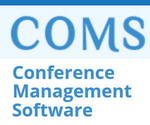Over the last two decades synthetic and semi-synthetic lipid compartments have been extensively used as in vitro models to investigate the reactive and interactive behaviour of cells, including their possible ancient precursors and their artificial implementations. Nevertheless, despite the great advances that these approaches have brought about in our understanding of the properties and dynamics of those supramolecular structures (e.g., liposome populations), as well as in biomedical applications (e.g., drug delivery), it is not always easy to interpret what is happening in reality, especially when such complex colloidal systems comprise chemical reactions, together with growth and division or reproduction processes.
In this context, we have developed a computational platform called ENVIRONMENT [1,2] suitable for studying the stochastic time evolution of reacting lipid compartments. This software is an improvement of a previous program that simulated the stochastic time evolution of homogeneous, fixed-volume, chemically reacting systems [3], extending it to more general conditions in which a collection of similar such systems interact and change in time. The overall simulation approach we take can be applied, in principle, to many different situations and type of systems, although our initial objective has been to provide an instrument for analysis of bottom-up and semi-synthetic attempts to construct relatively simple artificial protocells [4]. In particular, our approach is focused on elucidating the role of randomness [5] in the time behaviour of chemically reacting and self-reproducing lipid compartments, such as vesicles or micro emulsions. In fact, in compartmentalized reacting systems where the molecular population of the reactants is very low, random fluctuations due to the stochastic nature of reacting events (intrinsic stochasticity) can bring an open system towards unexpected time evolutions [3]. Additionally, this effect can be enlarged by the spreading of different initial concentrations of biological molecules encapsulated in lipid compartments, depending on the experimental preparation procedure (extrinsic stochasticity). In this framework, ENVIRONMENT has been designed to study the stochastic time evolution of compartmentalized lipid reacting systems by means of a general and widely- accepted Monte Carlo procedure, the Gillespie algorithm [6], and mimicking as closely as possible experimental conditions and preparation methods.
As it stands, the general project we have started is divided in two main lines of research. The first consists in modelling and simulating the structural properties and dynamic behaviour of lipid vesicle populations [2, 5], comparing them directly with real experimental data as for instance for the lipid vesicle competitions observed and described by Szostak’s and Luisi’s groups. This gives us the opportunity to test our approach and our simplifying assumptions and to estimate dynamic and structural parameters, by fitting experimental data. The second line of research explores hypothetical protocell models that keep a relatively low degree of molecular complexity. In particular, we have introduced and studied the ‘minimal lipid-peptide cell’, a prebiotic cell model where lipid vesicle dynamics is coupled with the condensation of oligo-peptides that could eventually form solute transport channels through the membrane [7]. Recently, we have also started analysing the feasibility of other more complex schemes, like the ‘Ribocell’ [9]: a hypothetical minimal cell model based on two hypothetical ribozymes: one catalyzing RNA strands replication, and the other the synthesis of amphiphilic molecules from lipid precursors [9-11]. In all these cases, random fluctuations can play an important role in determining the time behaviour of the studied systems[12].
REFERENCES
- Mavelli F and Ruiz-Mirazo K (2007) Stochastic simulations of minimal self-reproducing cellular systems, Phil. Trans. R. Soc. B 362 1789-802.
- Mavelli F and Ruiz-Mirazo K (2011) ENVIRONMENT: a computational platform to stochastically simulate reacting and self-reproducing lipid compartments, Phys. Biol. 7 036002.
- Mavelli F and Piotto S (2006) Stochastic simulations of homogeneous chemically reacting systems. J. Mol. Struct 771 55- 64.
- Solé RV, Munteanu A, Rodriguez-Caso C and Macía J (2007) Synthetic protocell biology from reproduction to computation Phil. Trans. R. Soc. B 362 1727-39
- Mavelli F and Stano P (2010) Kinetic models for autopoietic chemical systems role of fluctuations in homeostatic regime, Phys Biol 7 016010
- Gillespie DT (2007) Stochastic simulation of chemical kinetics. Ann. Rev. Phys. Chem. 58 35-55
- Ruiz-Mirazo K, Mavelli F 2008 On the way towards ‘basic autonomous agents’ stochastic simulations of minimal lipid- peptide cells. BioSystems 91 374-87.
- Szostak JW, Bartel DP and Luisi PL, (2001) Synthesizing life. Nature 409 387-90.
- Mavelli F, Della Gatta P, Cassidei L and Luisi PL (2010) Could the Ribocell be a feasible proto-cell model? Orig. Life. Evol. Biosphere 40 (4) 459-464
- Mavelli F(2010) Theoretical Approaches to Ribocell Modelling. In Luisi PL (eds) The Minimal Cell, Springer: New York.
- Mavelli F (2012) Stochastic simulations of minimal cells: the Ribocell model. BMC Bioinformatics 13(4) S10.
Mavelli F and Ruiz-Mirazo K (2013) Theoretical conditions for the stationary reproduction of model protocells. Int. Biol. 5 324-341.





